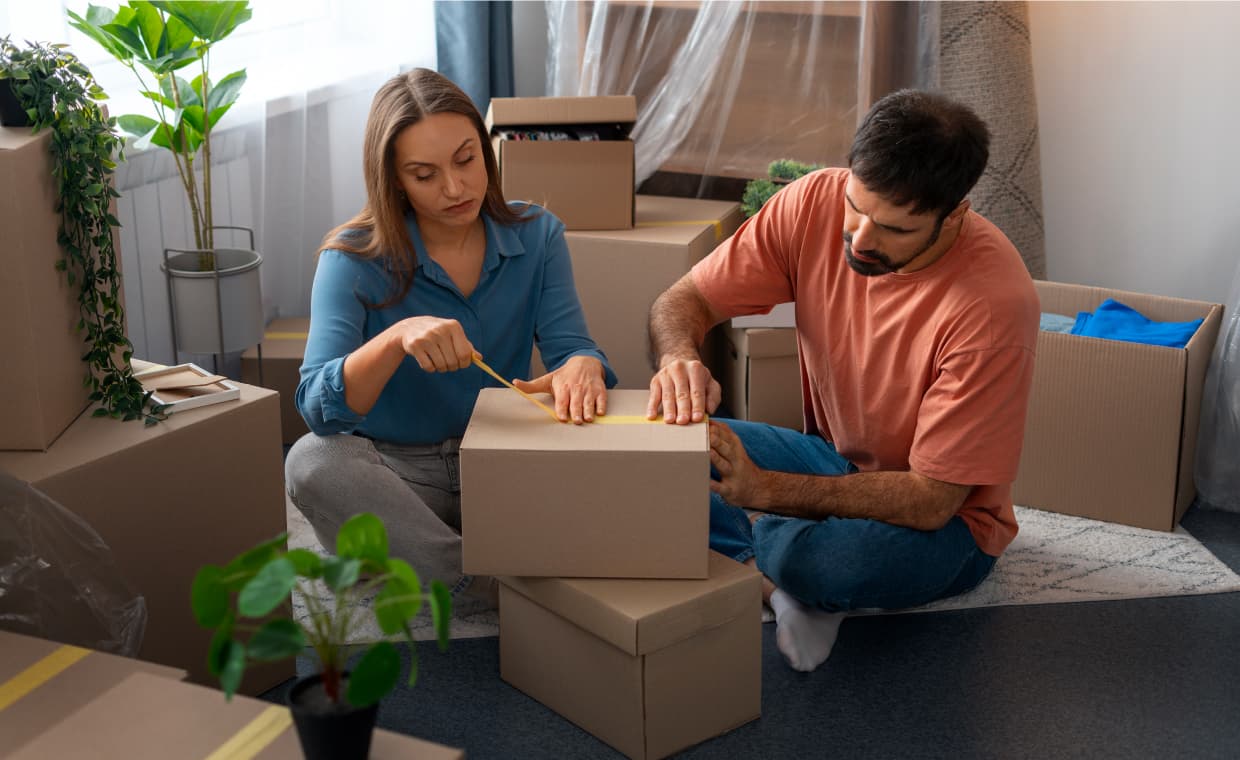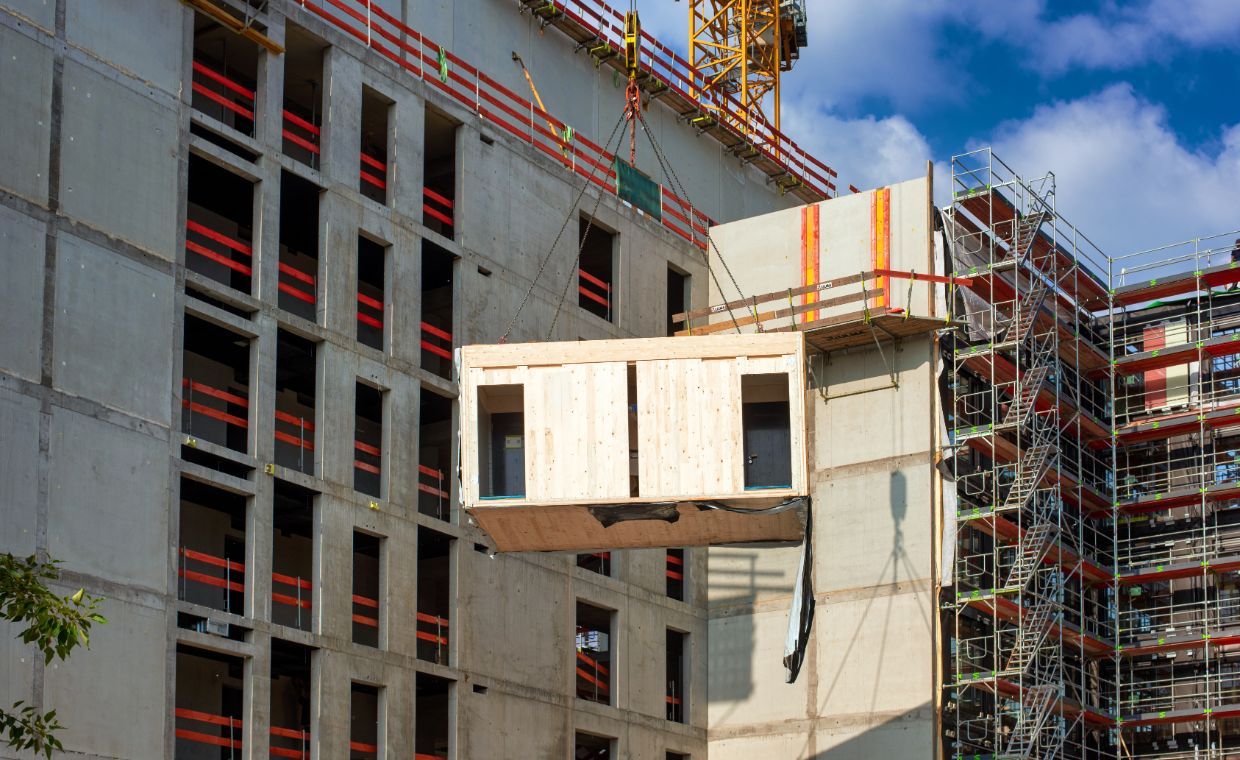
Moving days are looming, and the mere thought of packing up your entire life can send shivers down your spine. Whether you’re heading for a new adventure in Milwaukee or staying put in the Chicago suburbs, the task of packing can quickly spiral into a chaotic mess of misplaced items and frantic tape-ripping sessions. But fear not! With a few expert packing tips for moving, you can transform this daunting task into a streamlined process that safeguards your belongings and keeps your sanity intact.
These moving home packing tips aren’t just for those going the DIY route. Even if you’re planning to enlist the help of out-of-state movers from Chicago, understanding these packing techniques will ensure your items are well-protected during transit and arrive at your new home in pristine condition. After all, whether you’re loading boxes into your car or a moving van bound for Milwaukee, the ultimate goal is the same: to get your belongings safely from point A to point B. So, let’s dive in and discover how to pack like a pro, ensuring your move is smooth sailing from start to finish.
Gathering Your Packing Arsenal
Before you dive into the packing frenzy, it’s essential to arm yourself with the right tools for the job. Think of it as gearing up for battle against chaos and potential damage to your belongings. The quality of your packing supplies can make a world of difference in how well your items survive the move, whether you’re using moving and storage Chicago or planning a cross-country trek.

First and foremost, invest in sturdy boxes. Don’t skimp on quality here, as flimsy boxes can collapse under pressure, leading to broken items and frustration. Look for boxes specifically designed for moving, as they’re typically more durable than standard cardboard boxes. You can often find these at home improvement stores, moving companies (even some out-of-state movers in Chicago will offer them), or even online retailers.


Next, stock up on packing tape, bubble wrap, packing paper, and other protective materials. Packing tape is your best friend when it comes to sealing boxes securely and reinforcing their strength. Bubble wrap and packing paper provide cushioning for fragile items like dishes, glassware, and electronics. Consider using packing peanuts or crumpled newspaper for additional padding.
While purchasing new packing supplies is always an option, there are ways to save money and be environmentally conscious. You can often find free boxes on online marketplaces or by asking local businesses if they have any spare boxes. Using towels, linens, and clothing as padding can also reduce the need for bubble wrap and packing paper.
Remember, having the right tools at your disposal sets the stage for a successful and stress-free packing experience. Don’t underestimate the importance of quality packing supplies in protecting your belongings during transit.
Packing Tips for Moving Different Items
Packing isn’t a one-size-fits-all process. Different items require different approaches to ensure their safe arrival at your new home. Whether you’re moving from Chicago to Milwaukee or embarking on a cross-country journey, these packing strategies will help you protect your belongings:
01. Fragile Items

Dishes, glassware, and other breakables demand extra care. Wrap each item individually in bubble wrap or packing paper, securing it with tape. Place heavier items like plates at the bottom of boxes and fill any gaps with crumpled paper or packing peanuts to prevent shifting during transit. For extra protection, consider using specialized dish pack boxes with dividers.
02. Clothes and Linens
For clothes, you have several options. You can fold them neatly into boxes, use wardrobe boxes to hang them, or even leave them in dresser drawers if they’re not too heavy. Use vacuum-sealed bags to save space, especially for bulky items like winter coats or comforters.
03. Furniture

Disassemble furniture whenever possible to make it easier to move and reduce the risk of damage. Wrap individual pieces in furniture pads or blankets to protect them from scratches and dings. If you’re using professional movers, they’ll likely handle the disassembly and reassembly for you.
04. Artwork and Mirrors

Wrap artwork and mirrors in protective coverings like bubble wrap or blankets. Place them in sturdy boxes or picture boxes designed to safeguard fragile pieces. For large mirrors, consider custom crating for added protection.
05. Books and Documents

Pack books in small, sturdy boxes to prevent them from becoming too heavy and difficult to carry. Alternate the spine and open side of books to distribute weight evenly and prevent damage. For important documents, use a separate, clearly labeled box or binder.
06. Valuable or Sentimental Items
Keep these items with you during the move, if possible. If not, pack them in a separate box that you transport. Use additional padding and consider insuring them for added peace of mind.
By tailoring your packing approach to each item, you can minimize the risk of damage and ensure your belongings arrive at your new home safe and sound. Remember, a little extra effort during packing can save you a lot of heartache later on.
Labeling and Organization of Moving Items

Clear labeling and organization are the unsung heroes of a smooth move. When you arrive at your new home, especially after a long-distance move like from Chicago to Milwaukee, the last thing you want is to rummage through a sea of unmarked boxes, trying to find your coffee maker or your favorite pajamas. A well-organized labeling system can save you hours of frustration and ensure that each item finds its rightful place in your new abode.
Start by designating a specific marker or pen for labeling. Use it to write the contents of each box and the room it belongs to. Be as specific as possible – “kitchen – pots and pans” is far more helpful than just “kitchen.” Consider adding a numbering system to your labels. This allows you to create a corresponding inventory list where you can detail the contents of each numbered box. This way, if you need to find a specific item, you can simply consult your list and locate the corresponding box.
Color-coding is another effective strategy for staying organized. Assign a different color to each room in your new home and use corresponding-colored labels or tape on the boxes. This visual cue can be incredibly helpful when directing movers or friends who are helping you unload.

In addition to boxes, label furniture and other large items with their designated rooms. This will prevent them from being placed in the wrong areas during the move and save you the hassle of rearranging heavy items later on.
Even if you’re only moving a short distance, such as from Chicago to Milwaukee, a well-organized labeling system can streamline the unpacking process and help you settle into your new home more quickly. Remember, a little extra effort during packing can pay off immensely when it comes time to unpack and create a sense of order in your new space.
Utilizing Moving Box Space Efficiently
When it comes to packing for a move, space is a precious commodity. Whether you’re renting a moving truck or using a moving and storage service in Chicago, optimizing the space within boxes and your vehicle can save you money and hassle. Here are some expert tips for making the most of your available space:
01. Fill Gaps
Don’t leave empty spaces within boxes. Fill gaps with packing peanuts, crumpled newspaper, or soft items like clothing or towels. This will prevent items from shifting during transit and reduce the risk of breakage.

02. Distribute Weight Evenly
Avoid overloading boxes. Pack heavier items at the bottom and lighter items on top. This will prevent boxes from becoming too heavy to carry and reduce the risk of them collapsing under pressure.
03. Disassemble Furniture
Take apart beds, tables, and other furniture whenever possible. This not only saves space but also makes it easier to maneuver through doorways and hallways. Remember to keep all screws and hardware in a labeled bag and tape it securely to the furniture piece.
04. Utilize All Available Space
Don’t forget about the space inside drawers, suitcases, or even appliances like ovens and refrigerators. Fill these spaces with soft items like clothing, linens, or pillows.
05. Stack Strategically

When loading the moving truck, stack boxes and furniture strategically. Place heavier items at the bottom and lighter items on top. Distribute weight evenly to prevent the truck from tipping or becoming unstable during transit.
Implement these space-saving strategies, and you will be able to maximize the capacity of your moving truck or storage unit. This can translate to fewer trips, reduced costs, and a more organized move overall. Remember, efficient packing is not only about protecting your belongings but also about optimizing your resources and minimizing stress.
Additional Moving Packing Tips and Tricks
While following the basic packing strategies can significantly improve the protection of your belongings, a few extra hacks can elevate your packing game to the next level. Instead of relying solely on bubble wrap, get creative and use soft items like towels, blankets, and linens to cushion fragile items. This not only saves you money but also reduces waste. After a long day of moving, the last thing you want is to rummage through endless boxes for essentials. Save yourself the hassle by packing a “first-night” box with toiletries, pajamas, phone chargers, medications, and a few snacks. This will allow you to settle in quickly and comfortably after your move.
For electronics with complicated wiring, take photos of the setup before disconnecting any cables. This visual guide will make reconnecting them in your new home a breeze. You can apply this same trick to other items with complex arrangements, like light fixtures or entertainment systems. To prevent items from spilling out during transit, secure dresser drawers and cabinets with a layer of plastic wrap. This simple hack will also make moving these pieces much easier.
Spills and leaks can be a nightmare during a move, so take preventative measures by placing a layer of plastic wrap over the openings of bottles and containers before screwing on the lids. This is especially useful for toiletries and cleaning supplies that could damage other items if they leak. For clothes on hangers, save yourself the trouble of taking them off and folding them by simply grouping them in garbage bags. Tie the hangers together and place them in the bag, leaving the hooks exposed. This allows you to easily transfer clothes directly from the bag to your closet in your new home.
Remember, packing is a personal process, and there’s no one-size-fits-all approach. Don’t be afraid to experiment with different packing hacks and find what works best for you. The ultimate goal is to protect your belongings and make the unpacking process as seamless as possible.
Conclusion
Packing for a move doesn’t have to be a nightmare. By employing these expert packing tips for moving, you can transform the process into a manageable and even enjoyable task. Whether you’re moving across town or embarking on a cross-country adventure, the key is to be prepared, organized, and mindful of the unique needs of your belongings.
Remember, packing isn’t just about throwing things into boxes; it’s about protecting your cherished possessions and ensuring their safe arrival at your new home. By investing in quality packing materials, utilizing space efficiently, labeling clearly, and implementing creative hacks, you can safeguard your items from damage and streamline the unpacking process.
Whether you’re tackling the move yourself or enlisting the help of professionals, such as those offering moving and storage services in Chicago or out of state movers Chicago, these packing tips will prove invaluable. So, as you embark on your moving journey, remember to pack smart, stay organized, and embrace the opportunity to declutter and create a fresh start in your new space. With a little preparation and the right mindset, packing can be a rewarding part of your moving experience.
Apart from these packing tips, we have also written blog on moving cost, you may refer the following link:






























